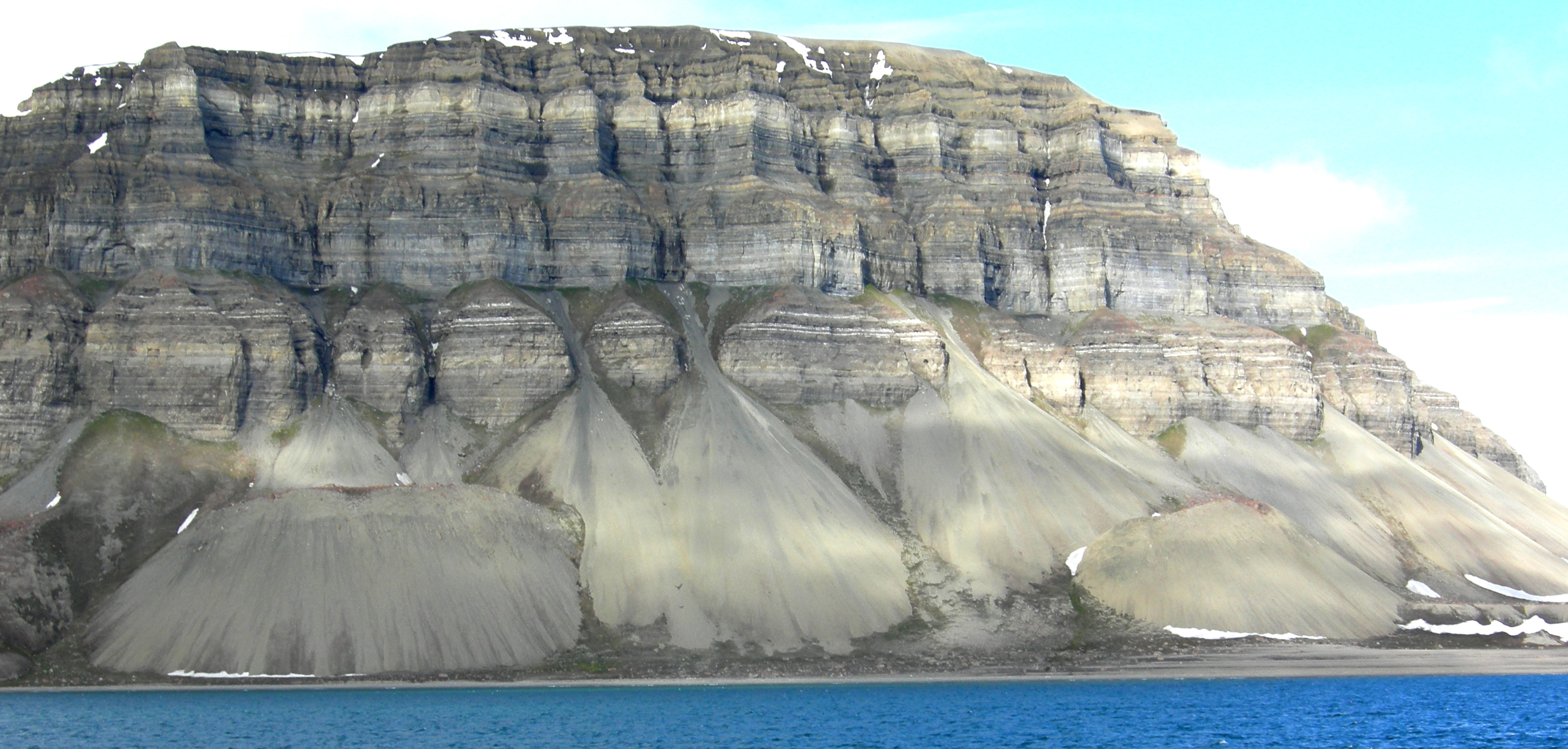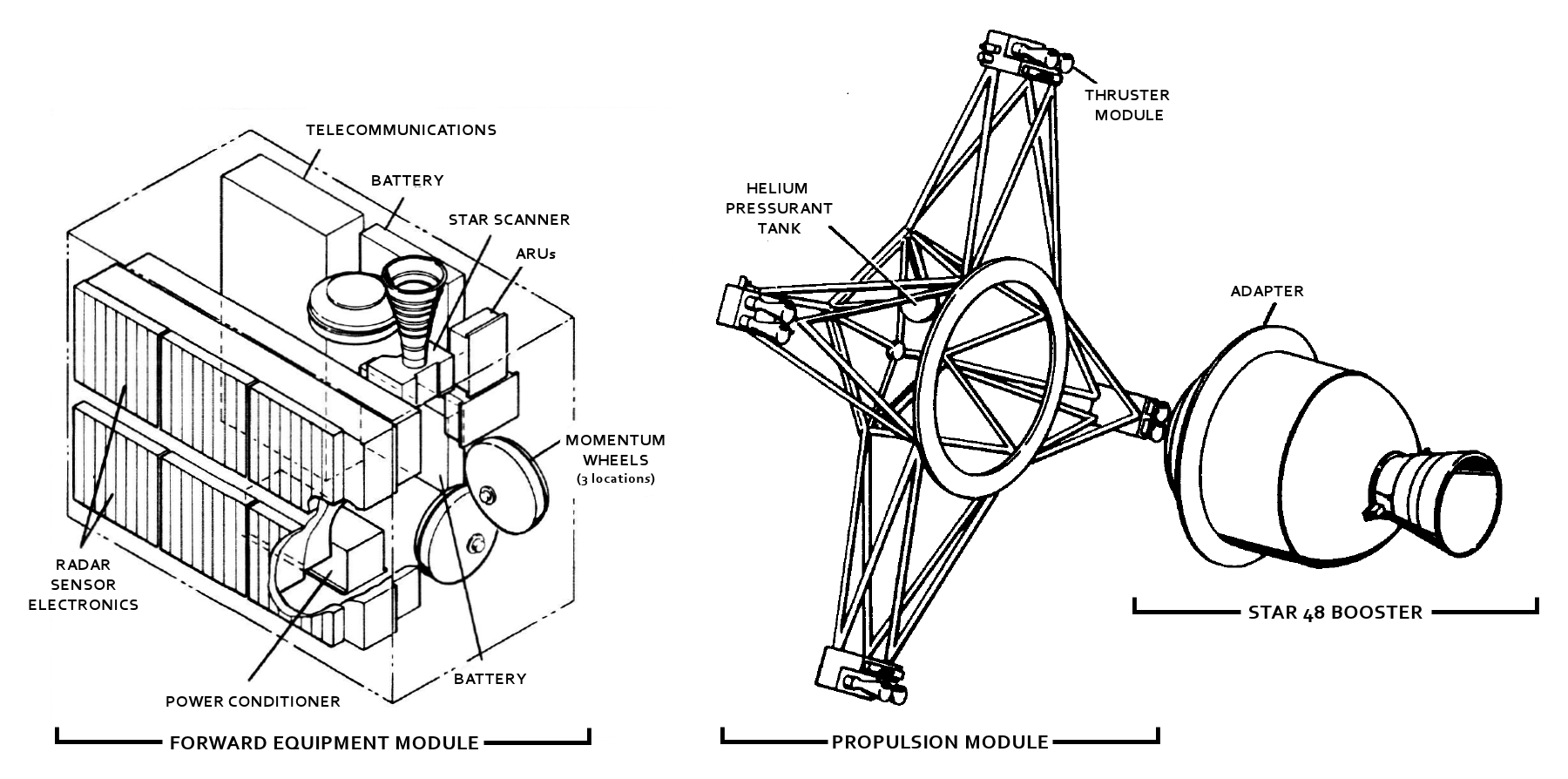|
Scalloped Margin Dome
A scalloped margin dome is a type of volcanic dome, found on Venus, that has experienced collapse and mass wasting such as landslides on its perimeter. The margins of these domes have headscarps or 'scallops' separated by ridges that are a consequence of adjoining scallops. Sometimes debris or slumping can be found at the bottom of these scarps or scattered many tens of kilometers away. Many examples show no debris at all. The center of these domes is often, but not always, a depression. There is another theory that the radial ridges of scalloped margin domes are volcanic dikes. During the first month of data from the ''Magellan'' spacecraft, the first of these features was found to the northeast of Alpha Regio, on Venus. It was one of the largest of these domes and therefore stood out. The strange feature was originally dubbed by the Magellan Project Science Team ''The Tick'', because the many radiating ridges resembled the legs of a tick. Its concavity was likely confused a ... [...More Info...] [...Related Items...] OR: [Wikipedia] [Google] [Baidu] |
Volcanic Dome
In volcanology, a lava dome is a circular mound-shaped protrusion resulting from the slow extrusion of viscous lava from a volcano. Dome-building eruptions are common, particularly in convergent plate boundary settings. Around 6% of eruptions on Earth are lava dome forming. The geochemistry of lava domes can vary from basalt (e.g. Semeru, 1946) to rhyolite (e.g. Chaiten, 2010) although the majority are of intermediate composition (such as Santiaguito, dacite-andesite, present day) The characteristic dome shape is attributed to high viscosity that prevents the lava from flowing very far. This high viscosity can be obtained in two ways: by high levels of silica in the magma, or by degassing of fluid magma. Since viscous basaltic and andesitic domes weather fast and easily break apart by further input of fluid lava, most of the preserved domes have high silica content and consist of rhyolite or dacite. Existence of lava domes has been suggested for some domed structures on the Mo ... [...More Info...] [...Related Items...] OR: [Wikipedia] [Google] [Baidu] |
Venus
Venus is the second planet from the Sun. It is sometimes called Earth's "sister" or "twin" planet as it is almost as large and has a similar composition. As an interior planet to Earth, Venus (like Mercury) appears in Earth's sky never far from the Sun, either as morning star or evening star. Aside from the Sun and Moon, Venus is the brightest natural object in Earth's sky, capable of casting visible shadows on Earth at dark conditions and being visible to the naked eye in broad daylight. Venus is the second largest terrestrial object of the Solar System. It has a surface gravity slightly lower than on Earth and has a very weak induced magnetosphere. The atmosphere of Venus, mainly consists of carbon dioxide, and is the densest and hottest of the four terrestrial planets at the surface. With an atmospheric pressure at the planet's surface of about 92 times the sea level pressure of Earth and a mean temperature of , the carbon dioxide gas at Venus's surface is in the ... [...More Info...] [...Related Items...] OR: [Wikipedia] [Google] [Baidu] |
Mass Wasting
Mass wasting, also known as mass movement, is a general term for the movement of rock or soil down slopes under the force of gravity. It differs from other processes of erosion in that the debris transported by mass wasting is not entrained in a moving medium, such as water, wind, or ice. Types of mass wasting include creep, solifluction, rockfalls, debris flows, and landslides, each with its own characteristic features, and taking place over timescales from seconds to hundreds of years. Mass wasting occurs on both terrestrial and submarine slopes, and has been observed on Earth, Mars, Venus, Jupiter's moons Io, and on many other bodies in the Solar System. Subsidence is sometimes regarded as a form of mass wasting. A distinction is then made between mass wasting by subsidence, which involves little horizontal movement, and mass wasting by slope movement. Rapid mass wasting events, such as landslides, can be deadly and destructive. More gradual mass wasting, such as soil cr ... [...More Info...] [...Related Items...] OR: [Wikipedia] [Google] [Baidu] |
Ridge
A ridge or a mountain ridge is a geographical feature consisting of a chain of mountains or hills that form a continuous elevated crest for an extended distance. The sides of the ridge slope away from the narrow top on either side. The lines along the crest formed by the highest points, with the terrain dropping down on either side, are called the ridgelines. Ridges are usually termed hills or mountains as well, depending on size. Smaller ridges, especially those leaving a larger ridge, are often referred to as spurs. Types There are several main types of ridges: ;Dendritic ridge: In typical dissected plateau terrain, the stream drainage valleys will leave intervening ridges. These are by far the most common ridges. These ridges usually represent slightly more erosion resistant rock, but not always – they often remain because there were more joints where the valleys formed or other chance occurrences. This type of ridge is generally somewhat random in orientation, often ... [...More Info...] [...Related Items...] OR: [Wikipedia] [Google] [Baidu] |
Dike (geology)
A dike or dyke, in Geology, geological usage, is a sheet of rock that is formed in a Fracture (geology), fracture of a pre-existing rock body. Dikes can be either Intrusive rock, magmatic or Sedimentary rock, sedimentary in origin. Magmatic dikes form when magma flows into a crack then solidifies as a sheet intrusion, either cutting across layers of rock or through a contiguous mass of rock. Clastic dikes are formed when sediment fills a pre-existing crack.Essentials of Geology, 3rd Ed, Stephen Marshak Magmatic dikes A magmatic dike is a sheet of igneous rock that cuts across older rock beds. It is formed when magma fills a fracture in the older beds and then cools and solidifies. The dike rock is usually more resistant to weathering than the surrounding rock, so that erosion exposes the dike as a natural wall or ridge. It is from these natural walls that dikes get their name. Dikes preserve a record of the fissures through which most mafic magma (fluid magma low in silica) reac ... [...More Info...] [...Related Items...] OR: [Wikipedia] [Google] [Baidu] |
Magellan Probe
The ''Magellan'' spacecraft was a robotic space probe launched by NASA of the United States, on May 4, 1989, to map the surface of Venus by using synthetic-aperture radar and to measure the planetary gravitational field. The ''Magellan'' probe was the first interplanetary mission to be launched from the Space Shuttle, the first one to use the Inertial Upper Stage booster, and the first spacecraft to test aerobraking as a method for circularizing its orbit. ''Magellan'' was the fifth successful NASA mission to Venus, and it ended an eleven-year gap in U.S. interplanetary probe launches. History Beginning in the late 1970s, scientists advocated for a radar mapping mission to Venus. They first sought to construct a spacecraft named the ''Venus Orbiting Imaging Radar'' (VOIR), but it became clear that the mission would be beyond the budget constraints during the ensuing years. The VOIR mission was canceled in 1982. A simplified radar mission proposal was recommended by the Solar ... [...More Info...] [...Related Items...] OR: [Wikipedia] [Google] [Baidu] |
Magellan Project Science Team
The ''Magellan'' spacecraft was a robotic space probe launched by NASA of the United States, on May 4, 1989, to map the surface of Venus by using synthetic-aperture radar and to measure the planetary gravitational field. The ''Magellan'' probe was the first interplanetary mission to be launched from the Space Shuttle, the first one to use the Inertial Upper Stage booster, and the first spacecraft to test aerobraking as a method for circularizing its orbit. ''Magellan'' was the fifth successful NASA mission to Venus, and it ended an eleven-year gap in U.S. interplanetary probe launches. History Beginning in the late 1970s, scientists advocated for a radar mapping mission to Venus. They first sought to construct a spacecraft named the ''Venus Orbiting Imaging Radar'' (VOIR), but it became clear that the mission would be beyond the budget constraints during the ensuing years. The VOIR mission was canceled in 1982. A simplified radar mission proposal was recommended by the Sol ... [...More Info...] [...Related Items...] OR: [Wikipedia] [Google] [Baidu] |
Tick
Ticks (order Ixodida) are parasitic arachnids that are part of the mite superorder Parasitiformes. Adult ticks are approximately 3 to 5 mm in length depending on age, sex, species, and "fullness". Ticks are external parasites, living by feeding on the blood of mammals, birds, and sometimes reptiles and amphibians. The timing of the origin of ticks is uncertain, though the oldest known tick fossils are from the Cretaceous period, around 100 million years old. Ticks are widely distributed around the world, especially in warm, humid climates. Ticks belong to two major families, the Ixodidae or hard ticks, and the Argasidae, or soft ticks. ''Nuttalliella,'' a genus of tick from southern Africa is the only member of the family Nuttalliellidae, and represents the most primitive living lineage of ticks. Adults have ovoid/pear-shaped bodies (idiosomas) which become engorged with blood when they feed, and eight legs. Their cephalothorax and abdomen are completely fused. In addit ... [...More Info...] [...Related Items...] OR: [Wikipedia] [Google] [Baidu] |
Volcanism On Venus
The surface of Venus is dominated by volcanic features and has more volcanoes than any other planet in the Solar System. It has a surface that is 90% basalt, and about 65% of the planet consists of a mosaic of volcanic lava plains, indicating that volcanism played a major role in shaping its surface. There are more than 1,000 volcanic structures and possible periodic resurfacing of Venus by floods of lava. The planet may have had a major global resurfacing event about 500 million years ago, from what scientists can tell from the density of impact craters on the surface. Venus has an atmosphere rich in carbon dioxide, with a density that is 90 times that of Earth's atmosphere. Even though there are over 1,600 major volcanoes on Venus, none are known to be erupting at present and most are probably long extinct. However, radar sounding by the ''Magellan'' probe revealed evidence for comparatively recent volcanic activity at Venus's highest volcano Maat Mons, in the form of ash flows n ... [...More Info...] [...Related Items...] OR: [Wikipedia] [Google] [Baidu] |
Volcanoes Of Venus
The surface of Venus is dominated by volcanic features and has more volcanoes than any other planet in the Solar System. It has a surface that is 90% basalt, and about 65% of the planet consists of a mosaic of volcanic lava plains, indicating that volcanism played a major role in shaping its surface. There are more than 1,000 volcanic structures and possible periodic resurfacing of Venus by floods of lava. The planet may have had a major global resurfacing event about 500 million years ago, from what scientists can tell from the density of impact craters on the surface. Venus has an atmosphere rich in carbon dioxide, with a density that is 90 times that of Earth's atmosphere. Even though there are over 1,600 major volcanoes on Venus, none are known to be erupting at present and most are probably long extinct. However, radar sounding by the ''Magellan'' probe revealed evidence for comparatively recent volcanic activity at Venus's highest volcano Maat Mons, in the form of ash flows ... [...More Info...] [...Related Items...] OR: [Wikipedia] [Google] [Baidu] |







